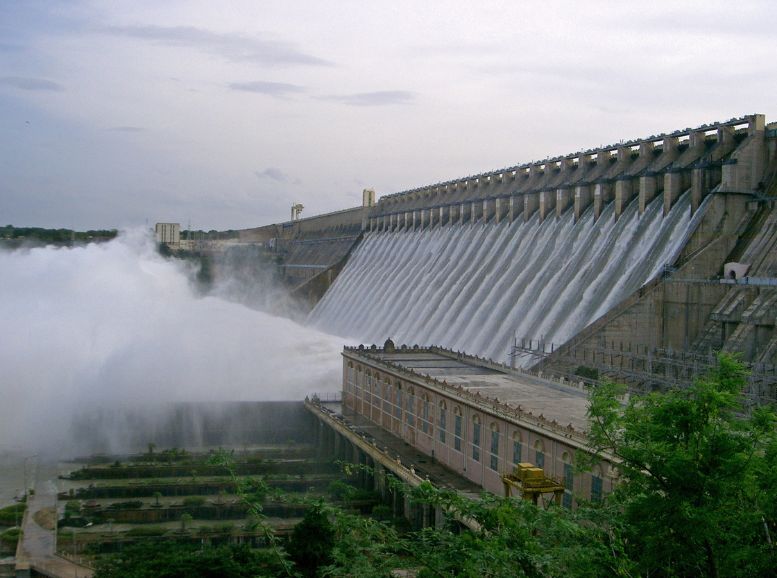Get ready to be awestruck by Nagarjuna Sagar Dam, a marvel of engineering nestled amidst the scenic landscapes of Telangana, India. This historic dam isn’t just a source of hydroelectric power – it’s a destination brimming with rich history, breathtaking beauty, and endless opportunities for exploration. Nature lovers will be captivated by the surroundings, while history buffs can delve into the dam’s past. Every visit to Nagarjuna Sagar Dam is a journey of discovery, leaving you with a sense of awe for its timeless legacy and enduring grandeur.
How to reach:
By Air:
The nearest airport to Nagarjuna Sagar Dam is Rajiv Gandhi International Airport in Hyderabad, located approximately 165 kilometers away. From the airport, you can hire a taxi or take a bus to reach Nagarjuna Sagar Dam. It’s a scenic drive through the countryside, offering glimpses of rural life and picturesque landscapes along the way.
By Train:
Although there’s no direct train connectivity to Nagarjuna Sagar Dam, you can opt to travel by train to nearby railway stations and then continue your journey by road. The closest railway stations to Nagarjuna Sagar are Miryalaguda Railway Station (approximately 85 kilometers away) and Nalgonda Railway Station (approximately 110 kilometers away). From these stations, you can hire a taxi or take a bus to reach the dam.
By Bus:
Several state-run and private buses operate regular services to Nagarjuna Sagar from major cities like Hyderabad, Guntur, and Vijayawada. You can board a bus heading towards Nagarjuna Sagar Dam from respective bus terminals. It’s advisable to check the bus schedules and book tickets in advance, especially during peak tourist seasons.
Best time to visit:
- Winter Wonderland (October to February): Arguably the most popular time to visit, winter offers cool and pleasant weather with temperatures ranging from 15°C to 25°C. Clear skies and lush green landscapes create a picture-perfect backdrop for sightseeing, outdoor adventures, and exploring the dam’s surroundings. Whether you’re marveling at the panoramic views or enjoying a relaxing boat ride, the comfortable weather ensures a truly enjoyable experience.
- Post-Monsoon Paradise (September to November): Following the monsoon season, the region comes alive with vibrant greenery and a rejuvenated landscape. Cooler temperatures and high reservoir water levels present a spectacular sight of the overflowing dam. Nature enthusiasts and photographers will find this an ideal time to capture the dam’s beauty in all its post-rainy season glory.
Attractions:
Ethipothala Waterfall:
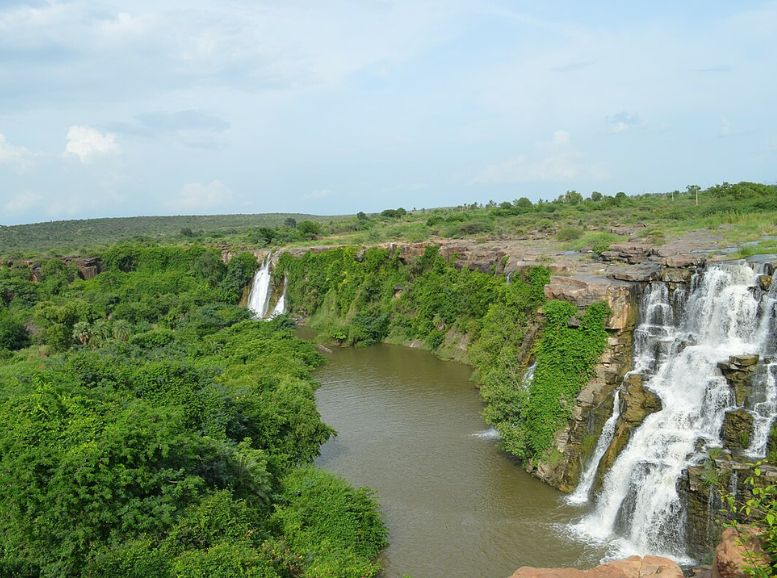
Nestled near Nagarjuna Sagar Dam, Ethipothala Waterfall is a mesmerizing natural wonder. The Chandra Vanka River plunges 21 meters down rocky cliffs, creating a picturesque scene amidst lush greenery. The cascading water generates a calming sound that fills the air, making it a tranquil spot. Visitors can marvel at the water cascading down the rocks, and rainbows often appear in the mist rising from the plunge pool.
Ethipothala Waterfall isn’t just for sightseeing. Adventure enthusiasts can enjoy trekking, hiking, and nature walks along well-marked trails that wind through the surrounding forests. For those seeking a peaceful escape, Ethipothala Waterfall offers a haven of tranquility, inviting visitors to explore and appreciate its natural beauty.
Nagarjuna Konda:
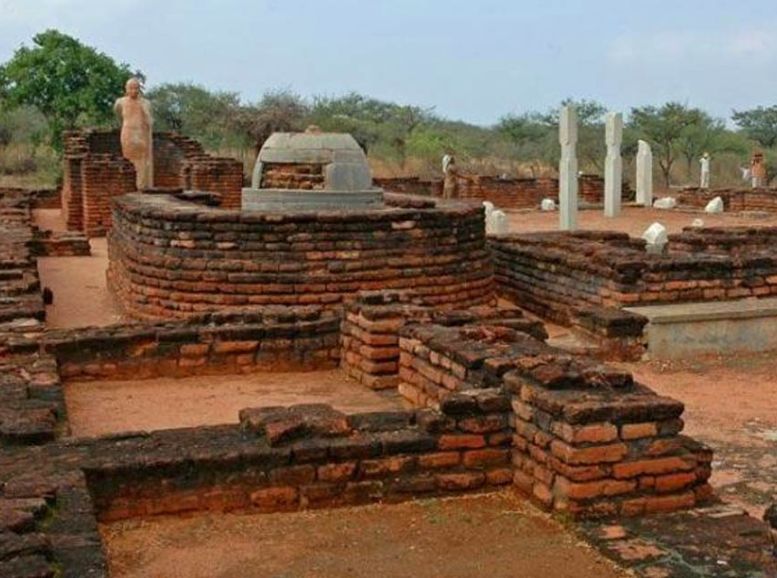
Rising from the tranquil waters of the Nagarjuna Sagar reservoir lies Nagarjuna Konda, an archaeological treasure trove. This once-thriving Buddhist center, dating back to the 3rd century BC, offers a captivating glimpse into the region’s rich Buddhist heritage. Excavated ruins, monastic complexes, and intricately carved sculptures stand as silent testaments to its glorious past.
Scattered across the island, stupas (dome-shaped structures), viharas (monasteries), and chaityas (prayer halls) speak volumes about the site’s former significance. Visitors can explore the archaeological site, marveling at the architectural wonders and gaining insights into Nagarjuna Konda’s spiritual and cultural importance through guided tours and informative exhibits.
Nagarjunasagar Wildlife Sanctuary:
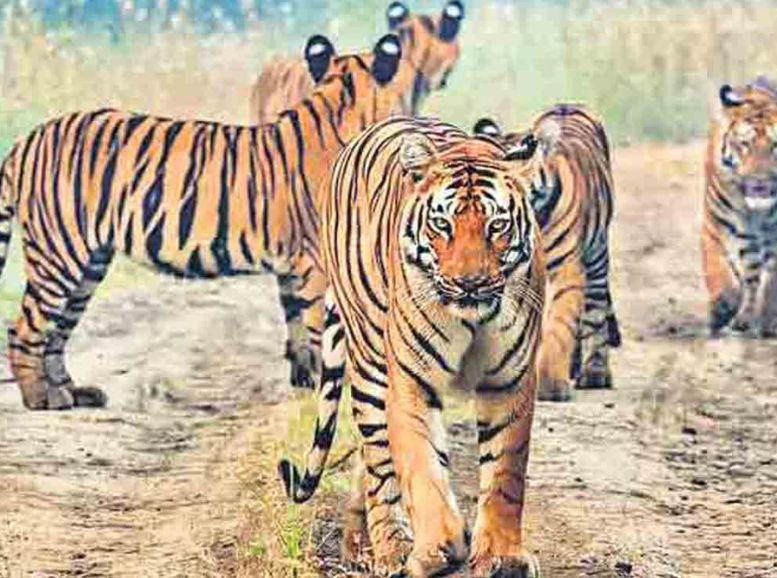
Adventure awaits at Nagarjunasagar Wildlife Sanctuary, a sprawling 350 square kilometer haven for wildlife enthusiasts and nature lovers. Nestled near Nagarjuna Sagar Dam, the sanctuary boasts a rich tapestry of flora and fauna, including mammals, birds, reptiles, and amphibians.
Embark on thrilling jeep safaris through the dense forests, where you might spot elusive tigers, leopards, spotted deer, sloth bears, and sambar deer in their natural habitat. Birdwatchers will find the sanctuary a paradise, with over 150 avian species including migratory birds that call it home during winter.
Anupu:
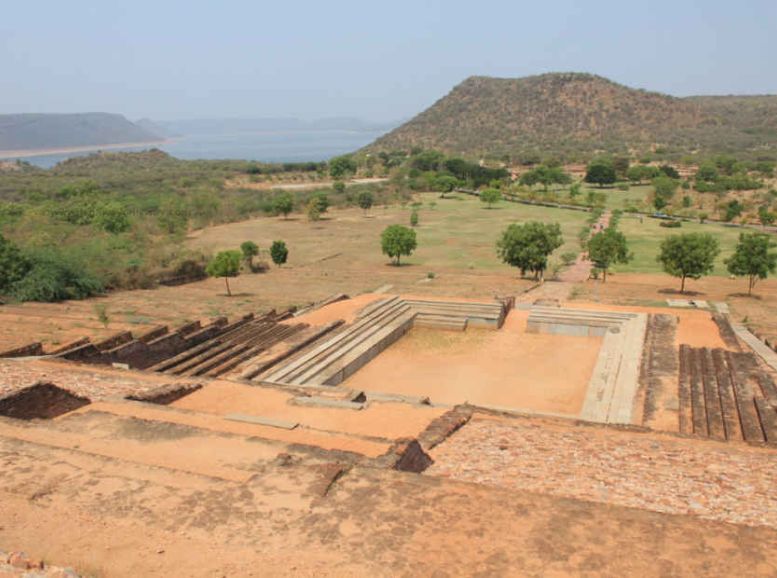
Nestled near Nagarjuna Sagar Dam lies Anupu, an ancient Buddhist site whispering tales of the region’s cultural and architectural heritage. Dating back to the 2nd century AD, Anupu thrived as a Buddhist settlement. Grand viharas (monasteries), stupas (dome-shaped structures), and a unique amphitheater-like structure stand as testaments to its past glory.
Excavations at Anupu offer a window into the social, cultural, and religious practices of those times. Intricately carved sculptures and architectural marvels speak volumes about the artistic mastery of bygone eras. Visitors can explore the ruins of the Buddhist monastery, marvel at the well-preserved relics, and imagine the vibrant life that once pulsed within these walls.
Museum at Nagarjuna Sagar Dam:
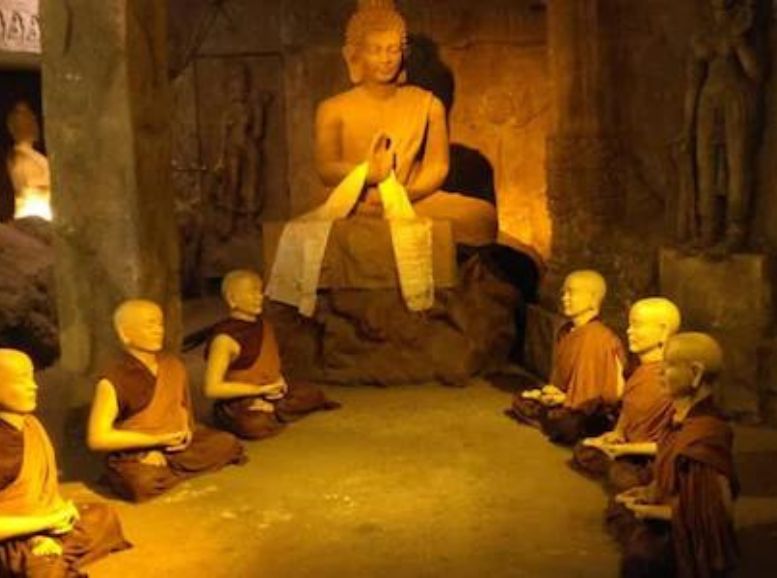
The museum near Nagarjuna Sagar Dam isn’t just a collection of artifacts; it’s a portal to the region’s history, culture, and heritage. This treasure trove offers visitors a comprehensive understanding of the dam’s significance and its surrounding areas.
Through a captivating array of artifacts, exhibits, and interactive displays, the museum brings to life the engineering marvels behind the dam, the archaeological wonders unearthed at Nagarjunakonda, and the rich ecological diversity of the region. Visitors can delve into the dam’s construction story, explore the fascinating finds from Nagarjunakonda’s excavations, and learn about ongoing environmental conservation efforts.
Local Experiences:
Unwind on the Reservoir: Experience the serenity of the Nagarjuna Sagar reservoir with a boat ride. Choose a leisurely pedal boat or a thrilling speedboat adventure – both offer a unique perspective of the dam and its surroundings.
Ethipothala Waterfall Escape: Take a refreshing detour to Ethipothala Waterfall. Enjoy a scenic hike through verdant landscapes to reach the cascading waters. Capture breathtaking photos or simply relax by the natural pool at the waterfall’s base.
Ferry to Buddhist Haven: Embark on a ferry ride to Nagarjuna Konda, an ancient Buddhist island sanctuary. Explore the archaeological ruins, stupas, and monasteries, and delve into the region’s rich Buddhist heritage.
Wildlife Encounter: Discover the diverse wildlife of Nagarjunasagar Wildlife Sanctuary with a thrilling safari. Spot tigers, leopards, deer, and a variety of birds in their natural habitat as you traverse the dense forests and grasslands.
A Walk Through Time: Explore the Anupu archaeological site, uncovering the region’s past. Wander through the remains of Buddhist viharas, stupas, and unique amphitheater-like structures, and gain insights into the area’s architectural heritage.
Riverside Picnic Retreat: Enjoy a relaxing picnic by the scenic banks of the reservoir. Pack your favorite treats, find a peaceful spot, and unwind amidst nature’s tranquility. Soak in the picturesque views of the dam and surrounding landscapes.
Cultural Delights: Immerse yourself in the vibrant culture of nearby villages. Interact with friendly locals, participate in traditional activities, and witness age-old customs, gaining a deeper understanding of rural life in Telangana.
Birdwatching Paradise: Especially during winter, Nagarjuna Sagar Dam transforms into a birdwatcher’s paradise. Witness a variety of avian life, including waterfowl, waders, and raptors, in their natural habitat. Grab your binoculars and camera to capture these feathered wonders.
Trekking Through Nature: Embark on scenic treks or nature walks through the lush greenery around the dam. Explore picturesque trails, breathe in the fresh air, and immerse yourself in the natural beauty of the region, spotting native flora and fauna along the way.
Travel tips:
Plan Smart: Research Nagarjuna Sagar Dam, nearby attractions, and accommodation options well in advance. This helps you make informed decisions and avoid last-minute hassles.
Weather Watch: Before your trip, check the weather forecast for Nagarjuna Sagar. Pack appropriate clothing and gear, especially if you plan outdoor activities.
Pack Essentials: Don’t forget sunscreen, hats, sunglasses, insect repellent, a first-aid kit, and plenty of water, especially for extended time outdoors.
Respect the Culture: Be mindful of local customs and dress modestly when visiting religious sites or interacting with locals.
Stay Hydrated: Drink plenty of water throughout your trip, particularly during hot weather or physical activities.
Wildlife Encounter Etiquette: When visiting Nagarjunasagar Wildlife Sanctuary, maintain a safe distance from animals, avoid feeding them, and follow park instructions for your safety and the animals’ well-being.
Be Prepared: Familiarize yourself with emergency contact numbers, nearby medical facilities, and safety protocols in case of emergencies.
Travel Green: Help preserve the natural beauty by disposing of trash responsibly. Opt for reusable water bottles and avoid single-use plastics.
Boating Safety: If you choose to boat on the reservoir, adhere to safety guidelines, wear life jackets, and stay vigilant, especially with children.
Beat the Buzz: Apply insect repellent, particularly during evening outdoor activities or near water bodies, to avoid mosquito bites.
Conclusion
Nagarjuna Sagar Dam transcends its role as a marvel of engineering. It’s the lifeblood of the region, nurturing agriculture, illuminating homes, and taming floods. Standing tall over the Krishna River, it embodies not just progress but also the rich tapestry of Telangana’s past, culture, and heritage. Visitors come to marvel at its scale and functionality, but are equally captivated by the serene beauty that surrounds this iconic landmark. Whether you explore the whispers of history at archaeological sites, embark on thrilling wildlife adventures, or simply bask in the tranquility of the reservoir, Nagarjuna Sagar Dam offers a captivating journey of discovery. It’s a testament to the harmonious coexistence of human endeavor and nature’s bounty. To plan your enriching visit, delve into our comprehensive travel guide on Xplro.com.
FAQs
- What is Nagarjuna Sagar Dam?
- Nagarjuna Sagar Dam is a monumental structure constructed across the Krishna River in Telangana, India. It serves irrigation, hydroelectric power generation, and flood control purposes, making it one of India’s largest and earliest multi-purpose dams.
- What is the significance of Nagarjuna Sagar Dam?
- Nagarjuna Sagar Dam significantly contributes to agricultural development by providing water for irrigation, thus supporting livelihoods. Additionally, it generates hydroelectric power, aiding in meeting the state’s energy needs.
- When was Nagarjuna Sagar Dam constructed?
- Construction of Nagarjuna Sagar Dam commenced in 1955 and concluded in 1967. It was inaugurated by former Prime Minister Jawaharlal Nehru.
- What are the dimensions of Nagarjuna Sagar Dam?
- Nagarjuna Sagar Dam spans approximately 1,550 meters in length and stands about 124 meters tall, ranking among the world’s largest masonry dams.
- How far is Nagarjuna Sagar Dam from Hyderabad?
- Nagarjuna Sagar Dam is situated roughly 150 kilometers away from Hyderabad, Telangana’s capital city, requiring a 3 to 4-hour journey by road.
- Is there an entrance fee to visit Nagarjuna Sagar Dam?
- No, there is no admission fee to access Nagarjuna Sagar Dam. Visitors can explore the dam and its vicinity free of charge.
- Are boating services available at Nagarjuna Sagar Dam?
- Yes, visitors can avail themselves of boating services at Nagarjuna Sagar Dam, providing an opportunity to cruise the reservoir and admire panoramic views.
- Can tourists visit Nagarjuna Sagar Dam during the monsoon season?
- While the monsoon season showcases Nagarjuna Sagar Dam’s majestic overflow, tourists should verify local regulations and safety precautions due to increased water levels.
- What lodging options are nearby Nagarjuna Sagar Dam?
- Several lodging options such as hotels, guesthouses, and resorts are available near Nagarjuna Sagar Dam, catering to diverse budgets and preferences.
- Is photography permitted at Nagarjuna Sagar Dam?
- Yes, visitors are allowed to take photographs at Nagarjuna Sagar Dam for personal use, capturing its scenic beauty.
- Is Nagarjuna Sagar Dam suitable for family visits?
- Yes, Nagarjuna Sagar Dam is family-friendly. However, visitors should supervise children, especially near water bodies and dam premises.
- Are guided tours offered at Nagarjuna Sagar Dam?
- Yes, guided tours are available, offering insights into the dam’s history, construction, and significance. Additionally, informative signage aids self-guided exploration at the site.




